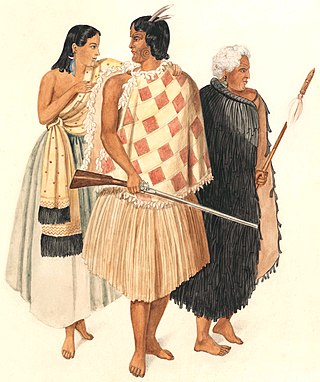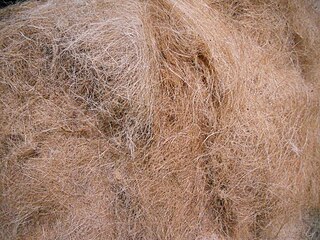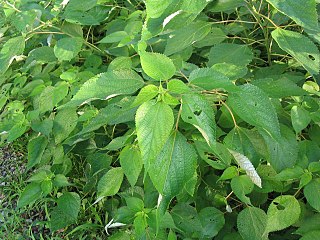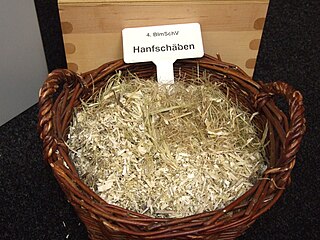
Flax, also known as common flax or linseed, is a flowering plant, Linum usitatissimum, in the family Linaceae. It is cultivated as a food and fiber crop in regions of the world with temperate climates. Textiles made from flax are known in English as linen and are traditionally used for bed sheets, underclothes, and table linen. Its oil is known as linseed oil. In addition to referring to the plant, the word "flax" may refer to the unspun fibers of the flax plant. The plant species is known only as a cultivated plant and appears to have been domesticated just once from the wild species Linum bienne, called pale flax. The plants called "flax" in New Zealand are, by contrast, members of the genus Phormium.

Linen is a textile made from the fibers of the flax plant.

New Zealand flax describes the common New Zealand perennial plants Phormium tenax and Phormium colensoi, known by the Māori names harakeke and wharariki respectively. Although given the common name 'flax' they are quite distinct from the Northern Hemisphere plant known as flax .

Coir, also called coconut fibre, is a natural fibre extracted from the outer husk of coconut and used in products such as floor mats, doormats, brushes, and mattresses. Coir is the fibrous material found between the hard, internal shell and the outer coat of a coconut. Other uses of brown coir are in upholstery padding, sacking and horticulture. White coir, harvested from unripe coconuts, is used for making finer brushes, string, rope and fishing nets. It has the advantage of not sinking, so can be used in long lengths in deep water without the added weight dragging down boats and buoys.

Water treatment is any process that improves the quality of water to make it appropriate for a specific end-use. The end use may be drinking, industrial water supply, irrigation, river flow maintenance, water recreation or many other uses, including being safely returned to the environment. Water treatment removes contaminants and undesirable components, or reduces their concentration so that the water becomes fit for its desired end-use. This treatment is crucial to human health and allows humans to benefit from both drinking and irrigation use.

In mining, tailings or tails are the materials left over after the process of separating the valuable fraction from the uneconomic fraction (gangue) of an ore. Tailings are different from overburden, which is the waste rock or other material that overlies an ore or mineral body and is displaced during mining without being processed.

Wastewater treatment is a process which removes and eliminates contaminants from wastewater and converts this into an effluent that can be returned to the water cycle. Once returned to the water cycle, the effluent creates an acceptable impact on the environment or is reused for various purposes. The treatment process takes place in a wastewater treatment plant. There are several kinds of wastewater which are treated at the appropriate type of wastewater treatment plant. For domestic wastewater, the treatment plant is called a Sewage Treatment. For industrial wastewater, treatment either takes place in a separate Industrial wastewater treatment, or in a sewage treatment plant. Further types of wastewater treatment plants include Agricultural wastewater treatment and leachate treatment plants.

Ramie, Boehmeria nivea, is a flowering plant in the nettle family Urticaceae, native to eastern Asia. It is a herbaceous perennial growing to 1.0–2.5 m tall; the leaves are heart-shaped, 7–15 cm (2.8–5.9 in) long and 6–12 cm (2.4–4.7 in) broad, and white on the underside with dense, small hairs—this gives it a silvery appearance; unlike stinging nettles, the hairs do not sting. The true ramie or China grass is also called Chinese plant or white ramie.

Industrial wastewater treatment describes the processes used for treating wastewater that is produced by industries as an undesirable by-product. After treatment, the treated industrial wastewater may be reused or released to a sanitary sewer or to a surface water in the environment. Some industrial facilities generate wastewater that can be treated in sewage treatment plants. Most industrial processes, such as petroleum refineries, chemical and petrochemical plants have their own specialized facilities to treat their wastewaters so that the pollutant concentrations in the treated wastewater comply with the regulations regarding disposal of wastewaters into sewers or into rivers, lakes or oceans. This applies to industries that generate wastewater with high concentrations of organic matter, toxic pollutants or nutrients such as ammonia. Some industries install a pre-treatment system to remove some pollutants, and then discharge the partially treated wastewater to the municipal sewer system.

Textile manufacturing is a major industry. It is largely based on the conversion of fibre into yarn, then yarn into fabric. These are then dyed or printed, fabricated into cloth which is then converted into useful goods such as clothing, household items, upholstery and various industrial products.

Jute is one of the most important natural fibers after cotton in terms of cultivation and usage. Cultivation is dependent on the climate, season, and soil.

Bast fibre is plant fibre collected from the phloem or bast surrounding the stem of certain dicotyledonous plants. It supports the conductive cells of the phloem and provides strength to the stem. Some of the economically important bast fibres are obtained from herbs cultivated in agriculture, as for instance flax, hemp, or ramie, but bast fibres from wild plants, as stinging nettle, and trees such as lime or linden, willow, oak, wisteria, and mulberry have also been used in the past. Bast fibres are classified as soft fibres, and are flexible. Fibres from monocotyledonous plants, called "leaf fiber", are classified as hard fibres and are stiff.

Straw plaiting is a method of manufacturing textiles by braiding straw and the industry that surrounds the craft of producing these straw manufactures. Straw is plaited to produce products including straw hats and ornaments, and the process is undertaken in a number of locations worldwide.

Bamboo textile is any cloth, yarn or clothing made from bamboo fibres. While historically used only for structural elements, such as bustles and the ribs of corsets, in recent years different technologies have been developed that allow bamboo fibre to be used for a wide range of textile and fashion applications.
Textile manufacturing is one of the oldest human activities. The oldest known textiles date back to about 5000 B.C. In order to make textiles, the first requirement is a source of fibre from which a yarn can be made, primarily by spinning. The yarn is processed by knitting or weaving to create cloth. The machine used for weaving is the loom. Cloth is finished by what are described as wet process to become fabric. The fabric may be dyed, printed or decorated by embroidering with coloured yarns.

Scutching is a step in the processing of cotton or the dressing of flax or hemp in preparation for spinning. The scutching process separates the impurities from the raw material, such as the seeds from raw cotton or the straw and woody stem from flax fibers. Scutching can be done by hand or by a machine known as a scutcher. Hand scutching of flax is done with a wooden scutching knife and a small iron scraper. The end products of scutching flax are the long finer flax fibers called line, short coarser fibers called tow, and waste woody matter called shives.

Setralit is a technical natural fiber based on plant fibers whose property profile has been modified selectively in order to meet different industrial requirements. It was first manufactured in 1989 by Jean-Léon Spehner, an Alsatian engineer, and further developed by the German company ECCO Gleittechnik GmbH. The name “Setralit“ is derived from the French company Setral S.à.r.l. which is a subsidiary company of ECCO, where Spehner was employed at that time. Setralit was officially described first in 1990.

Shives, also known as shoves, boon or hurd, are the wooden refuse removed during processing flax, hemp, or jute, as opposed to the fibres (tow). Shives consist of "the woody inner portion of the hemp stalk, broken into pieces and separated from the fiber in the processes of breaking and scutching" and "correspond to the shives in flax, but are coarser and usually softer in texture". Shives are a by-product of fiber production.

Linum strictum, commonly known as rigid flax, upright flax, and upright yellow flax, is a species of flax that has a rigid stem, from whence it derives its taxonomic name, growing to a height of 10–45 cm. The plant is endemic to the Mediterranean region, and features highly in classical Hebrew and Greek literature, owing principally to its cultivation for its plant fiber, linen, but also for its edible seeds and culinary foliage.
Cottonization is a process that adapts flax and hemp fibres for spinning with other staple fibres such as cotton or wool. Cottonization removes impurities and shortens the fiber length of flax for subsequent spinning processes. Cottonized fibers are helpful in blending with other staple fibers such as cotton or wool.


















